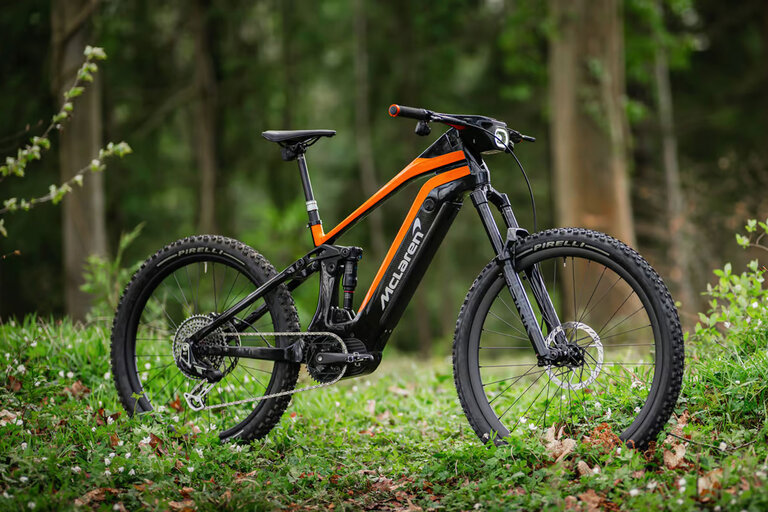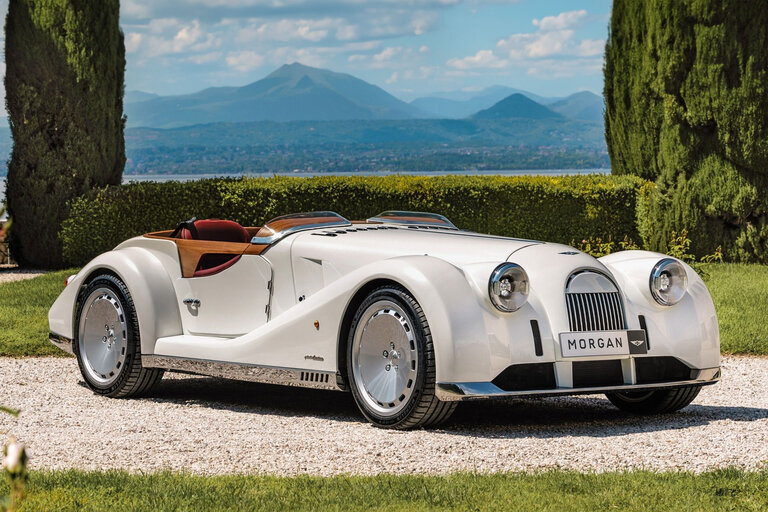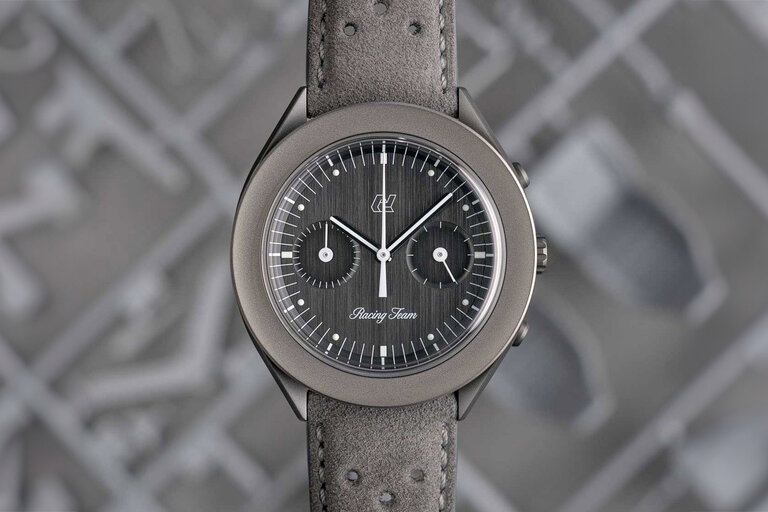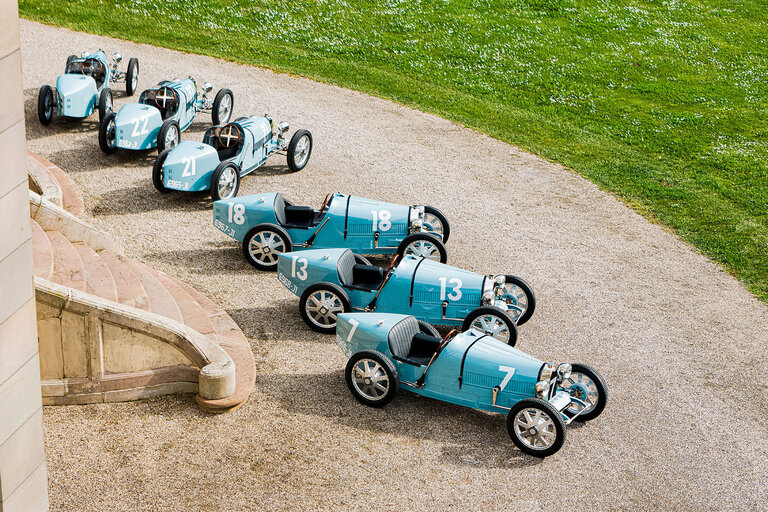
From the July 2008 issue of Car and Driver.
For those who missed 1968 the first time around, not to worry: The sequel is way better.
We were there—this journal and your enduring correspondent—back when Bullitt was a movie, not a Mustang. About a year later [ C/D, November 1969], we put the original Dodge Challenger R/T Hemi through its test-track paces, too. Fun? Yeah. Gas was thirty-some cents a gallon, and our hormones were raging. That said, those were the carburetor days, and we’d never go back.
But now that Detroit is doing remakes, we’re first in line. The Dodge Challenger SRT8 is still a few weeks short of its showroom debut as we buckle into our test car. In Hemi Orange, it draws men like nickel beer, mostly guys who remember the muscle-flexing 1970–74 originals. Dodge will build mild Challengers, too, your choice of SE, standard with a 3.5-liter V-6, or the R/T, packing the 5.7 Hemi V-8, but we’ll get to those another day. Big orange is the muscled-up 6.1-liter, 425-horse Hemi. As remakes go, this one is a thriller.
Parked beside the Dodge, the dark Highland Green Mustang might as well be invisible. It draws only dust. This is the Bullitt, an evolution of the Mustang GT that includes the $3310 “Bullitt package,” limited to 7700 cars. In keeping with the covert-ops theme of the 40-year-old movie, the Bullitt package deletes the froufrou: no chrome horsie in the grille, no snakes, no fogs. You get grayed-out five-spoke mags, a shorter axle ratio (3.73 instead of 3.55), more exhaust snort, a cold-air engine intake, carbon pads on the front brakes, and a power spike of 15 horsepower, to 315 at 6000 rpm.
Oh, yeah, and the driver gets an aluminum shift ball atop the five-speed lever that he’ll grab a lot and a classy-looking engine-turned metal panel all across the dash.
The muscle-era standouts had style, but rarely did they have grace. Both of today’s re-enactors still play off four-decade-old shapes and cues. But the oldies had their unsatisfying aspects, the result of stuffing weighty V-8s into small cars that cringed from the torque and recoil. The bodies were flexy and rattly, they cornered with felony understeer, and you drove with the wheel in your chest and a roar in your ears.
On the other hand, we’d never had so much fun, and we stayed up late prowling for chicks. Or GTOs just achin’ to be whupped. Whatever kept the night going.
Yearly improvements add up to a sea change in 40 years. Horsepower is everywhere now, and cars don’t cringe from it. Moreover, there’s a whole new crop of car guys who have logged their miles in agile Hondas and turbo Subarus. So today’s question: Are these muscle-car reloads merely desperate nostalgia plays by a troubled domestic industry looking for something— anything—that works? Or are they great new choices in today’s automotive smorgasbord?
A two-man jury has been specially selected to consider this question, one of them the same guy who road-tested the Challenger 426 Hemi in 1969, the other an insightful young staffer who wasn’t born till 1978. After due deliberation, the jury finds as follows.
Second Place: Ford Mustang Bullitt
Your observer has logged thousands of Mustang miles since that red 1968 fastback 390 GT finished last among six sporty coupes in his first comparison test [C/D, March 1968]. Four decades later, the Mustang is Detroit’s most enduring act.
Retro? Oh, yeah. Intentionally so, happily so, all of those old Mustang cues, the deeply tunneled dash dials and the quirky compressed numbers counting off the revs and the miles. The cockpit has the same dark mood; a high beltline capped by a low roof doesn’t leave much room for glass. The cowl is high, and the hood reaches out like a long tray as it serves up the distance.
HIGHS: The whole-grain joy of driving, the snorty V-8 bark, the smooth clutch grab.
LOWS: The whole-grain racket of driving, the dark-hole gauges, the frantic revs at 75 mph.
But it’s the differences that make the Bullitt so much fun. The clutch engages just right. The throttle is blippy but not too quick. When you pull the Tremec lever, you’re moving mighty masses down in the box, so there’s some heft to the pull, reminiscent of Detroiters of yore. Don’t expect the snick of a Honda—Motown muscle was always beefy, serious. The Bullitt is serious about shifting in a way we could only imagine in 1968.
Let’s not forget the pipe music, either. The Bullitt gets a unique exhaust system with a connector between the sides and tuned outlets at the tail, upsized half an inch from the Mustang GT’s to 3.5 inches. Remember the sounds you daydreamed about in study hall. The Bullitt plays them, loud or soft, tracking your foot motions like the needle on an LP.
Steve McQueen drove a 1968 390 GT (the 390 was its engine size, in cubic inches) in the movie, like our old comparison car, except for its color. Today’s showroom Bullitt leaves that old pony for dead, sprinting to 60 mph in 5.0 seconds, 1.3 seconds quicker. The gap widens in the quarter-mile, to 13.6 seconds at 104 mph versus 14.8 seconds at 95 mph. When the street racers of yesteryear spotted a 390 Mustang, they saw an easy kill. Today’s 281-cubic-inch Bullitt, now an SOHC V-8, has two intake valves per cylinder and a snarling disposition. If you could time-travel it back to the ’60s, it would lose by a length or two to a 426 Hemi or a 427 Corvette, but it would have hurt GTOs and 442s so bad they’d cry.
We had no test of cornering grip in 1968, and brake tests were done from 80 mph. But it was a rare muscle car in the ’60s that could exceed 0.60 g. Any and all Mustangs, notorious for understeer, would have ground their fronts to dust trying. Not so with our Bullitt, more than credible at 0.85 g on all-season 50-series BFGs.
Mustangs are affordable rides lined with low-aspiration plastic, ready-to-wear cars for the masses. The Bullitt package adds a muscular intensity, a mechanical presence that dominates the personality. The steering is tight and quick, enough to zig your path if you aren’t smooth. The ride is firm, always in motion, relentlessly up-down up-down. You feel the beat of the V-8—can’t escape it—even when you pull into fifth and loaf. Like the sea, the tires always put up a roar, a reminder of their first-person contact with the road.
THE VERDICT: The neighborhood kid who stuck around and just got better with the passage of decades.
In a new century where even brutally fast cars are silky in their manners, the Bullitt Mustang still plays that ’60s McQueen character: restless, looking for trouble, quick to light the tires.
2008 Ford Mustang Bullitt
315-hp V-8, 5-speed manual, 3536 lb
Base/as-tested price: $31,525/$34,860
C/D TEST RESULTS
60 mph: 5.0 sec
100 mph: 12.3
1/4 mile: 13.6 @ 104 mph
Braking, 70–0 mph: 182 ft
Roadholding, 300-ft-dia skidpad: 0.85 g
C/D observed fuel economy: 21 mpg
First Place: Dodge Challenger SRT8
The original Challenger was in prototype form when this road tester left his suspension-engineering job at Chrysler to join C/D. One thing was clear even then: That machine would never be a handler.
But, boy, was it a looker. Its proportions were spectacular, outrageously wide for the time, with squirrel-cheek fenders that bulged far outboard of the tires. The reborn car looks slab-sided by comparison. And colossal. Which is not an illusion: It’s 6.5 inches longer and 5.6 taller. Big iron. But get this: The 2008 Challenger is narrower than the original by nearly an inch, giving it proportions that seem rather ordinary. Biggest disappointment: The sides no longer tuck under down in the shadows, a delicious Challenger detail that didn’t translate to modern machinery.
HIGHS: The thrusty 6.1 powerhouse, the purposeful highway stride, the crowd that gathers.
LOWS: How’s my driving? In Hemi Orange everybody knows.
Much has been gained, however. This Challenger has good bones, the Chrysler 300 platform minus four inches of wheelbase. Which means that all of the 300’s pieces, including the SRT8 motor muscle and suspension sinew, bolt right up. The structure is Diebold solid, the steering cuts like a Mayo surgeon, the ride comes with discipline rather than abuse, and the sounds whisper of capability in waiting. Unlike the dual-quad 426 Hemi of 1970—you had to push through two stiff detents in the carb linkage to get all eight barrels open—the 6.1 Hemi just pours it on, 425 horses in increments as slender as one or two from the wonderfully gradual throttle. This is a heroic performer: 4.8 seconds to 60 and on through the quarter in 13.3 seconds at 108 mph.
Back in 1969, our first Hemi Challenger was found to have a few bent pushrods after the test, so its 14.1-second quarter at 103 mph is not a good benchmark. But even a blueprint 426 wouldn’t match today’s 6.1-liter SRT8.
Whereas the old Challenger was a looker with up-option engines to add swagger, the new coupe’s modern bones give a balance of performance entirely new to this model. With the 20-inch Goodyear Supercar summer tires (all-weathers are available), 245/45s front and 255/45s rear, the 4189-pound Dodge circled the skidpad at 0.86 g and stopped from 70 mph in 170 feet, eclipsing the Ford in both marks.
The wide Goodyears kawop when the road gives them a reason but are much quieter than the Mustang’s BFGs. Ride motions are firm, disciplined, muscular, and at the same time, reassuring; whatever comes next, the suspension is ready. The Hemi sounds more distant than the Bullitt’s V-8, too, and the Chrysler five-speed automatic shifts without the blur between ratios that makes most automatics sound slushy.
Adding the SRT8 option, which brings with it a $2163 gas-guzzler charge, jacks up the Challenger’s price to $40,208 as tested, more than five large beyond the Bullitt’s. You get better seats—large and shapely thrones in front—covered in rich-looking low-sheen leather. The rear accommodates three across on a thickly padded cushion. Knees are welcome, and the center passenger can keep head attached, impossible in the Mustang. There’s even a fold-and-slide feature in the right-front seat to aid passenger boarding.
THE VERDICT: The strutting ’70s showoff, gone for 35 years, is back with a slick new act.
The big-coupe concept is practically extinct in Detroit these days, and we doubt that the Challenger’s return will change the trend. Fashion winds are different now. But in Hemi Orange, this is an extrovert’s ride, just as a Hemi Challenger was in 1970.
2008 Dodge Challenger SRT8
425-hp V-8, 5-speed automatic, 4189 lb
Base/as-tested price: $40,158/$40,208
C/D TEST RESULTS
60 mph: 4.8 sec
100 mph: 11.4
1/4 mile: 13.3 @ 108 mph
Braking, 70–0 mph: 170 ft
Roadholding, 300-ft-dia skidpad: 0.86 g
C/D observed fuel economy: 19 mpg
This content is created and maintained by a third party, and imported onto this page to help users provide their email addresses. You may be able to find more information about this and similar content at piano.io
Source link





